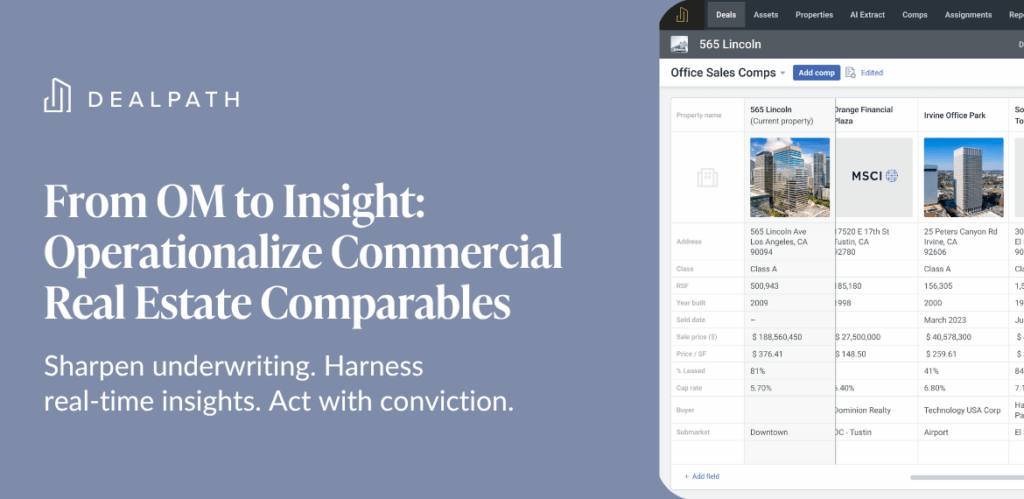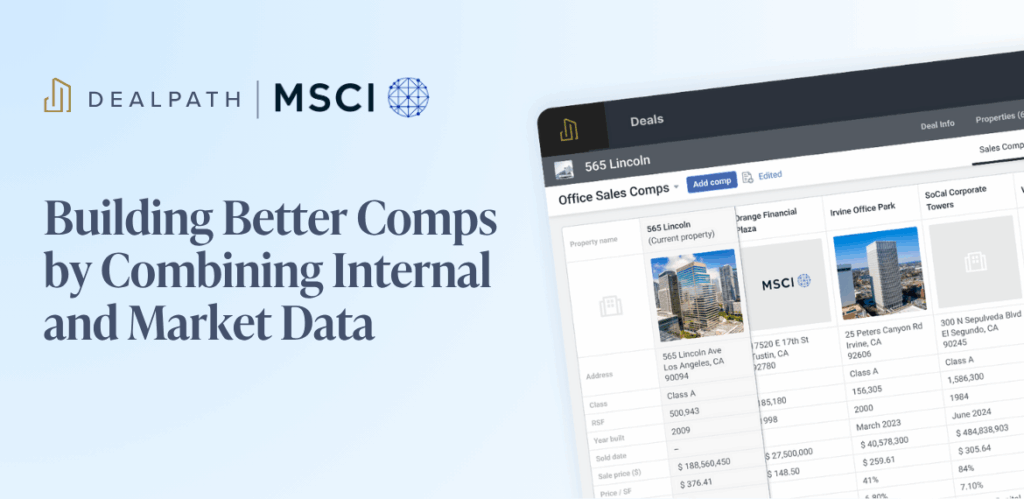This blog post was last updated on Wednesday, July 19th.
Yield on cost is one of several metrics that investors and developers consider when evaluating deals to verify the risk is worth the reward. Also known as the development yield, this metric helps deal teams to precisely measure risk and track return profiles through the lifecycle of a project in real estate development software.
Read on to learn more about yield on cost in real estate, including the formula, how to calculate it, how this metric adds value, and more.
What is Yield on Cost in CRE Development?
Yield on cost is a metric that investors calculate to assess a project based on its cost and projected returns. It’s calculated by dividing the net operating income by the total project cost.
Yield on cost may also be called return on cost, cost cap rate, build-to rate, or going-in cap rate.
Before launching a development project or approving a CRE debt origination deal, investors work to vet and analyze the deal to ensure the projected ROI is worth the cost. The development yield offers one answer to this question.
A higher yield on cost will always equate to higher returns, but also heightened risk. For this reason, developers may choose to pursue deals with a yield on cost that falls within a certain range. This metric is best used comparatively, and complemented by other measures of risk as part of a comprehensive evaluation process.
Yield on Cost Commercial Real Estate Formula
Yield on Cost= Net Operating Income/Total Project Cost
The yield on cost formula is simple. To calculate this metric, start by determining the net operating income. Then, divide this figure by the total project cost. The result is the yield on cost.
Yield on Cost Vs Cap Rate
A property’s cap rate and development yield are both critical financial metrics, but measure risk and reward in different ways.
The cap rate of a property takes its present value into account, creating a benchmark for its value at a certain moment in time. Property valuations also change in light of macro conditions and updates, meaning the cap rate is not static.
Example: Comparing Yield on Cost Across Two Examples
To better understand how to calculate and leverage the yield on cost, let’s look at two prospective development starts. For the purposes of this example, assume that we know the net operating incomes and total project costs for these deals.
| Deal 1 | Deal 2 | Comparable deal 1 | Comparable deal 2 | |
| Net operating income | $2,104,000 | $1,620,000 | $1,750,000 | $1,830,000 |
| Total project cost | $29,600,000 | $18,900,000 | $22,700,000 | $25,300,000 |
| Development yield | 7.1% | 8.5% | 7.7% | 7.2% |
While the first new deal has a high net operating income at $2.1 million, the relatively high total project cost brings the yield on cost below the 7.2-7.7% benchmark in this sub-market at 7.1%. The second deal, on the other hand, is well above this comparable at 8.5%.
Based on this information, it appears that, of these two deals, deal 2 may be more lucrative. To fully assess if this deal fits the target profile, though, an investor would likely measure risk in other ways, including a deeper dive into sub-market comparables.
How Do Investors Use Development Yield to Vet Deals & Make Decisions?
Determining the yield on cost across deals in the same location or asset class can add much-needed market context. By framing deals in terms of ROI, investors can take a more data-driven approach to mitigating risk and pursuing profitable opportunities.
Because investment strategies vary considerably, some investors may favor low-risk projects with a relatively low yield-on-cost. High-risk investors, on the other hand, may only pursue projects with high development yields.
Deal management platforms help investors to fully leverage historical investment data to unlock competitive insights and compare apples to apples. Beyond centralizing this competitive information in one platform, deal management software like Dealpath helps investors to intuitively reference these deals with powerful analytics. Capturing this information for every deal your firm reviews enables your deal team to amass significant market intelligence at your fingertips, strengthening future investment decisions.
4 Tactics To Simplify, Standardize & Scale Development Projects
If it takes hours to wrangle multiple stakeholders to learn where projects stand, or deadlines slip through the cracks, there’s a better way to manage development projects. New technologies have empowered development teams to standardize workflows for scalable execution.
Download our eBook to learn how your firm can adopt new best practices to achieve stakeholder alignment, build maximum efficiencies and deliver optimal returns.
Download E-Book



